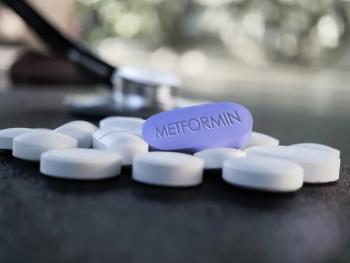
Cesarean section increases risk of Crohn’s disease
In a recent study, offspring delivered through cesarean section were more likely to develop Crohn’s disease than those vaginally delivered.
Cesarean section (CS) increases risk of Crohn’s disease later in a child’s life, according to a recent study.
More infants are being delivered through CSs around the world, making up 20% of all deliveries. Concerns have arisen that the early exposure to bacteria during CS can lead to complications later in the offspring’s life. During vaginal delivery, infants are exposed to bacteria from the birth canal, but those born by CS experience a greater prevalence of skin flora, possibly affecting gut bacterial colonization.
To study a possible connection between CS and gastrointestinal disease, investigators conducted a population-based cohort study of individuals born in Sweden between January 1, 1990, and December 31, 2000 with a gestational age of 37 to 42 weeks. Participants were categorized into a CS delivery group and a vaginal delivery group.
The study population was followed until 2017, with data being collected on rates of inflammatory bowel disease, appendicitis, cholecystitis, and diverticulitis. Data was taken from the Swedish National Patient Register.
Data was taken on over 1 million individuals. About 12% were delivered by CS, while about 88% were vaginally delivered. The CS group had a median gestational age of 38 weeks, while the vaginally delivered group had a median gestational age of 40 weeks.
Cases of Crohn’s disease in the CS group had a median time of about 17 years, compared to about 17 and a half years for the vaginally delivered group. Before adjustments, Crohn’s disease, diverticulosis, and cholecystitis were significantly more likely in the CS group. After adjustments, only Crohn’s disease saw an increased risk.
There are few studies on how certain variables during delivery may affect gut microbiota. CS delivery, the method of feeding, antibiotic treatment, gestational age, and environmental factors may all affect and disturb gut microbiota.
Of these variables, CS delivery is the greatest, possibly leading to long-lasting consequences. Currently, Crohn’s disease is the closest associated complication from CS.
This article originally appeared on Contemporary Pediatrics®.
Reference
- Hellsing C, Örtqvist AK, Hagel E, Mesas-Burgos C, Gustafsson UO, Granström AL. Delivery mode and risk of gastrointestinal disease in the offspring. Acta Obstetricia et Gynecologica Scandinavica. 2022. doi:10.1111/aogs.14427
Newsletter
Get the latest clinical updates, case studies, and expert commentary in obstetric and gynecologic care. Sign up now to stay informed.










